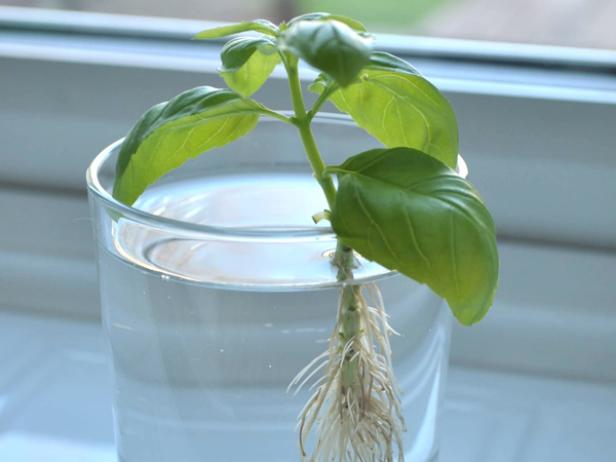Keep that fresh flavor going all year long.https://www.foodnetwork.com/grilling/grilling-central-how-tos/how-to-bring-outdoor-herbs-indoors
To keep the fresh taste of your garden herbs alive in your wintertime meals (and to keep a little gardening in your life, too), relocate them indoors when temperatures drop.
With a little preparation, nearly all of your herbs can be rehoused inside for the winter to be enjoyed year after year. And there’s even better news: It’s easy to do! Most herbs, after they are established, need minimal care and can flourish indoors through the cold winter months. Herbs that are already in containers are the easiest to bring inside; they just need a little TLC to accommodate the change. But bringing plants that are rooted in garden beds into indoor pots is totally doable, too.
With that said, if you’re a gardener who likes to cook and adores the taste of fresh herbs in your dishes, here’s how you can continue to enjoy the year-round flavors of your favorite fresh herbs.

Elodie Lapierre / EyeEm/Getty
Inspect for Pests Before Bringing Plants Inside
The goal is to bring your herbs, not pests, indoors. Before you relocate your herbs, inspect them thoroughly for insects and eggs. The last thing you want is a pest hitching a ride into your home and latching onto other indoor plants. Examine the underside of the leaves, as that’s where some pests do their best hiding.
Gently and lightly spray your herbs with a hose, including the underside of leaves, and give the soil a good soak.
For potted plants, gently slide the plant out of the container and check the soil; this is another area where pests lurk.
If you do find pests or eggs, it may be best to leave the plant outside, as it can take weeks to mitigate or control the issue. The next option is to buy some fresh, organic herbs from a local farmer of your desired herbs and pot them up inside.
Pot ’Em Up
This part may seem a little intimidating, but don’t fret, it’s not as complicated as you may think. The best time to pot up tender herbs is before the first frost. Check your local weather to see when your first frost may be in sight.
Start by selecting the healthiest herbs to bring indoors. Look for healthy coloring, sturdy stems and green leaves. (And of course, no pests.)
Then, select a container that is large enough to accommodate each herb’s root ball as well as a little room for growth, about a few inches in extra space from the plant to the pot’s rim.
When digging up herbs, use a trowel. Slowly dig around the herb in a circle while including as many roots as possible. If you cut into roots, don’t worry, they will grow back in their new pot.
Once you have your herb ready for repotting, place a layer of well-draining potting mixture at the bottom of the pot and then set the herb on top of the mixture.
Fill in the empty areas inside the pot with more soil mixture. When filled, press lightly, but don’t compact the soil.
For potted plants, before relocating them indoors full-time, give them a little transition time by bringing them in every night 7 to 14 days before the final move. This small act will help them acclimate better to being indoors.
Help Herbs Adjust to the Move
With a little TLC your herbs will adapt to their new surroundings, but don’t be alarmed if at first, they experience what’s called transplant shock. This may look like leaves falling off or limpness in the leaves and stem. Wait a few days (or maybe weeks) and give your herbs time to adjust. After all, they have just experienced massive changes in their habitat.
When positioning herbs in your home, place them in an area where they will get bright indirect sunlight. Turn them once a week to help all sides of your plant get enough even sunlight.
Water them frequently, but not too much. When the top inch or two of the soil is dry you may want to give your herbs a drink.
Before you know it, your outdoor herb will be settling comfortably indoors to be enjoyed all season long.
Propagate
Also known as water propagation, taking cuttings of your indoors herbs will not only encourage more fresh herbs to grow on your plant but give you more potted herbs for the following summer.
To propagate, cut the herb at the base of the stem and place it in a small vase or cup filled with water. Place the plant in bright indirect sunlight and they will soon develop roots. Once the roots are about two inches in length, you can re-pot them in the soil to expand your indoor herb garden.
Growing herbs indoors will benefit your dishes and keep you working on your green thumb while the snow falls. As with anything else, it just takes some time to learn the trade, and before you know it, you will be enjoying the fresh flavors of herbs all year long.

